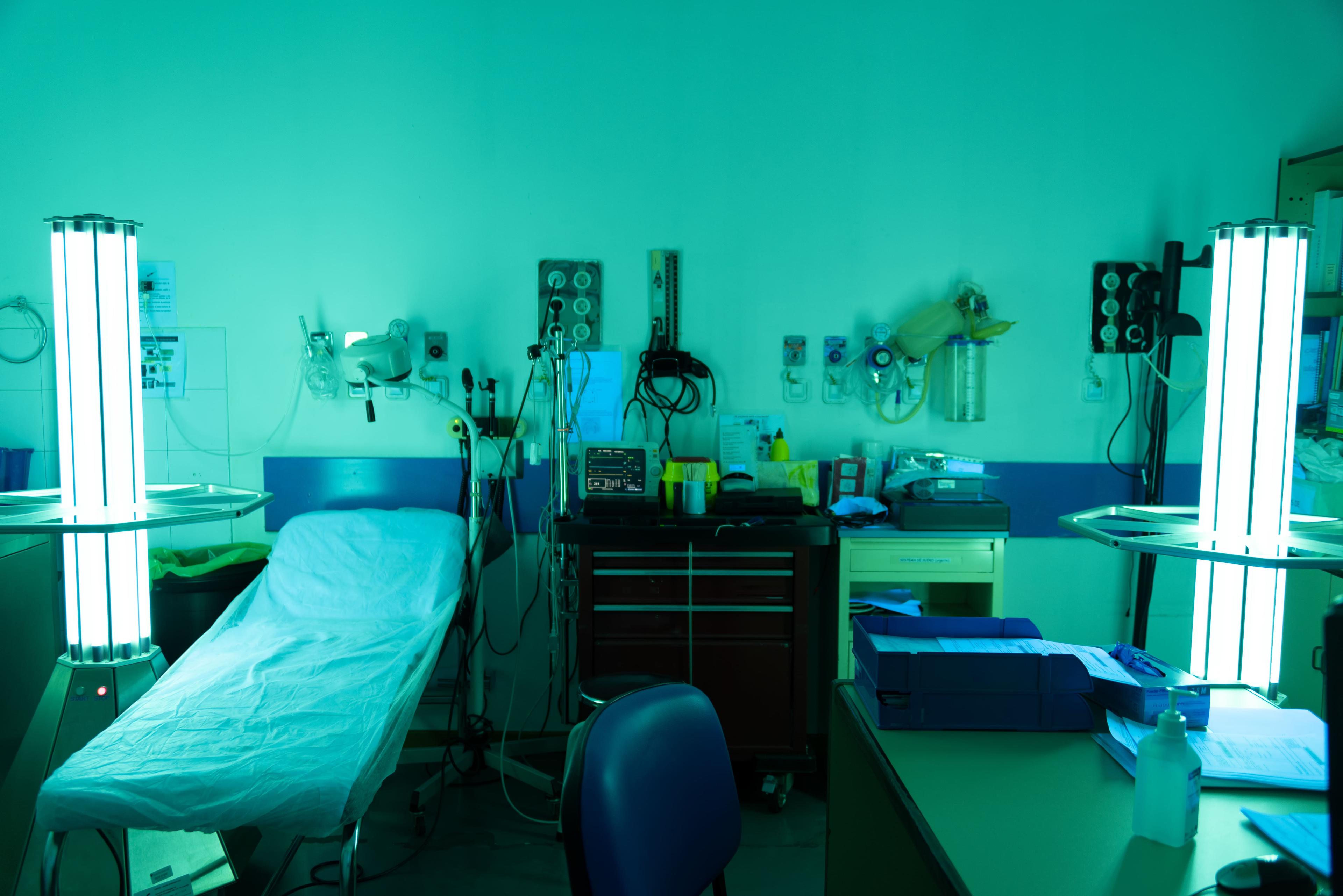August 31, 2023
Robotics Continue to Transform the Commercial Cleaning Industry


By 2027, the janitorial services market is expected to reach $441.54 billion at a CAGR (compound annual growth rate) of 8%, holding close to the 9% CAGR that occurred between 2022- 2023.
A better understanding of the importance of cleaning for health and safety has led to new cleaning measures and a demand for commercial cleaners across industries.
To address the growth of the cleaning industry and increasing scope of work, in addition to combating labor issues, commercial cleaners have introduced and continue to introduce robotic cleaning equipment into their workflows.
Thus, the global robotic floor scrubber market is also growing at a rapid pace, solidifying the importance of this technology to the cleaning industry.
The robotic floor cleaning industry alone is seeing exponential growth. According to research conducted by Allied Market Research, “the global robotic floor scrubber market size was valued at $178.9 million in 2022, and is projected to reach $575.6 million by 2032, growing at a CAGR of 12.8% from 2023 to 2032.”
Autonomous solutions are part of a pivotal change in the commercial cleaning industry and the benefits are many.
Cleaning robots have evolved from being a novelty to becoming a crucial part of the commercial cleaning industry. From supporting staff with repetitive and mundane work to offsetting labor, robotics technology continues to impact the cleaning industry.
These specialized machines are equipped with advanced sensors, artificial intelligence, and cutting-edge algorithms, allowing them to navigate complex environments, identify and address dirt, dust, and grime, and even interact safely with human occupants.
There are a wide variety of robotics already integrated into facilities maintenance workflows, here are a few examples.
Robotic floor cleaners equipped with powerful suction, brushes, and mopping mechanisms can autonomously navigate and clean small to large areas efficiently.
Autonomous floor cleaning equipment, like Cobi 18 by ICE Cobotics, uses sensors to detect obstacles and map out optimal cleaning paths, reducing the need for manual intervention and ensuring consistent cleaning coverage.
On average Cobi frees up cleaning team members from 2-4 hours of floor cleaning per unit deployed, essentially giving them the time back in the day. After starting the unit, cleaning staff can focus on other critical tasks, allowing them to increase productivity.
Additionally, Cobi has multiple ‘modes’ of operation. Users can map an entire route, map the perimeter of an area and the robot will fill in the center on its own, and it can be used in manual mode.
Not only that but once routes are mapped, Cobi can be programmed to run multiple routes back-to-back without human intervention, increasing the amount of time the unit cleans and staff are able to focus on other priorities.
Window cleaning has long been a challenging task for commercial cleaning companies, especially for high-rise buildings with extensive glass exteriors. Window-cleaning drones are making the process of cleaning windows easier and safer.
Currently, there are two types of window-cleaning drones on the market, Semi-Autonomous Drones and Autonomous Drones.
Semi-autonomous drones have a camera that a pilot uses to operate the drone. The human pilot operates the drone including the application of window cleaning solution and the squeegees.
Autonomous drones are still in the early stages, but these drones do not require a human operator. Autonomous drones fly from a command center to the designated building and complete the cleaning without human operation.
Both types of drones use LTE and 5G connectivity making it possible for them to operate over long distances.
The global COVID-19 pandemic highlighted the importance of maintaining hygiene standards. Disinfecting robots equipped with ultraviolet (UV) light or other sanitization methods have been introduced to efficiently sanitize surfaces and reduce the risk of viral transmission.
This is particularly helpful in healthcare environments where according to research on the National Library of Medicine website, traditionally used manual processes are labor intensive, leave room for errors which can increase the risk of exposure, and do not provide effective results.
Additionally, chemicals traditionally used during manual cleaning can be toxic and leave an unwanted residue that poses a risk to cleaning staff, patients, and healthcare workers.
The research goes on to point out that:
“Ultraviolet radiation exposure is used as a no-contact decontamination method. There is a wealth of evidence indicating the effectiveness of ultraviolet (UV) germicidal irradiation as a disinfection and sterilization approach for the prevention of various infectious diseases, including COVID-19, influenza, and tuberculosis.”
Besides being able to effectively combat the spread of disease without human intervention, UV disinfecting is a safer way for cleaning teams to complete the job while also focusing on other critical tasks.

The benefits of using robotic commercial cleaning equipment are many. From enhanced efficiency to happier workers, autonomous solutions continue to support commercial cleaners and drive the industry forward.
The industry is benefiting in many ways including:
Commercial cleaning robots are known to deliver more efficient, safer, and consistent cleans. This is due to the machine learning technology that improves the cleaning route each time the unit is deployed and in the case of autonomous floor scrubbers, the units can cover thousands of square feet of flooring in less time than traditional methods.
Plus, the machines can be easily deployed by any staff member, resulting in more consistent cleaning.
Additionally, using autonomous machines eliminates human errors like missed spots, which can have negative consequences on building occupants, and these machines work alongside staff members as part of the team, helping to improve staff morale and time on the job.
While the initial investment in robotics technology can be significant, the long-term cost savings are substantial, as businesses reduce labor expenses, improve productivity, and gain greater insight into the cleaning process.
This can lead to improved cleaning performance and can play a significant part in creating spaces that are safer for building occupants. In the long run, this can save companies a significant amount of money.
There are also cleaning technology companies in the market that strive to make the adoption and implementation of robotics equipment affordable and simple for their clients.
ICE Cobotics, for example, offers an all-inclusive subscription for Cobi 18. The all-inclusive subscription includes parts, consumables, and services for the unit. Service alone can be a costly expense for clients, as service costs are estimated to be 40% of the total cost of the machine over a three-year useful life.
By including service in the subscription price of the unit, ICE Cobotics makes adopting automation affordable and hassle-free for their clients as there are no additional charges for service, parts, or regular software updates necessary for the technology to stay up-to-date and advanced.
Advances in artificial intelligence enable robots to navigate complex environments with greater precision, avoiding obstacles and adapting to dynamic surroundings. This makes it safe to deploy them in a wide variety of environments.
Beyond safe navigation capabilities, cleaning robots help improve working conditions and safety for cleaning staff by minimizing the physical strain that comes from repetitive tasks. Robots take on this repetitive and labor-intensive work and help to reduce the risk of workplace injuries.
Robotics can help in other ways too. Window-cleaning drones for example make it possible for window cleaners to remain on the ground versus scaling buildings on scaffolding. This reduces the risk of injury and creates a safer work environment.
Most robotics technology is part of RaaS, Robots as a Service, and Internet of Things technology that drives businesses today.
This means, the machines are connected to the Cloud and have the capability to collect and store data for end users to review.
Cobi 18, for example, uses a fleet management software called i-SYNERGY that collects cleaning data as the unit works. This information is then stored in the Cloud.
Through the i-SYNERGY platform, the data is converted into daily, weekly, and monthly cleaning reports that end users can review in near real-time and from any location. This alone makes it easier for managers to track cleaning progress, and they can do so across multiple sites without having to physically be at the site, saving them time and money.
Real-time access to data insights has helped many in the commercial cleaning industry improve cleaning processes, reduce machine downtime, and even increase productivity.
The commercial cleaning industry continues to adapt and respond to the changes building owners face every day through the implementation of automation. From autonomous floor cleaners to disinfecting robots, these innovations are driving efficiency, safety, and hygiene to new heights.
As the industry continues to embrace robotics and automation, we can expect a future where cleaning processes are smarter and more streamlined, ultimately creating cleaner and healthier spaces for all.
ICE Cobotics is a global leader in cleaning technologies and solutions. We specialize in designing and manufacturing autonomous floor cleaning equipment, available through an affordable all-inclusive subscription.
Ready to take your commercial cleaning to the next level? Reach out to our Automation Experts and we’ll get you started.
Ready to Explore Automation? Talk to an Automation Expert